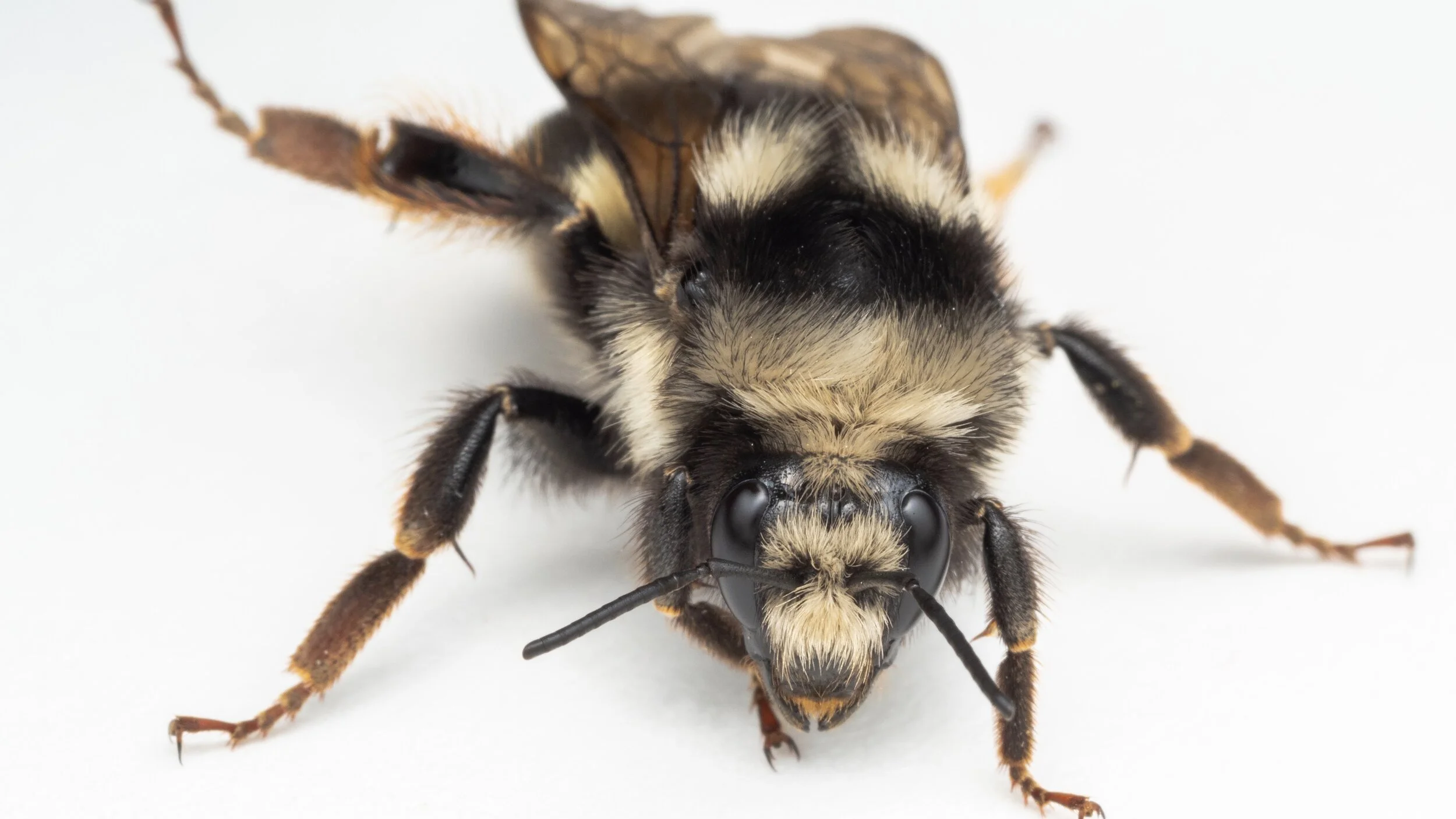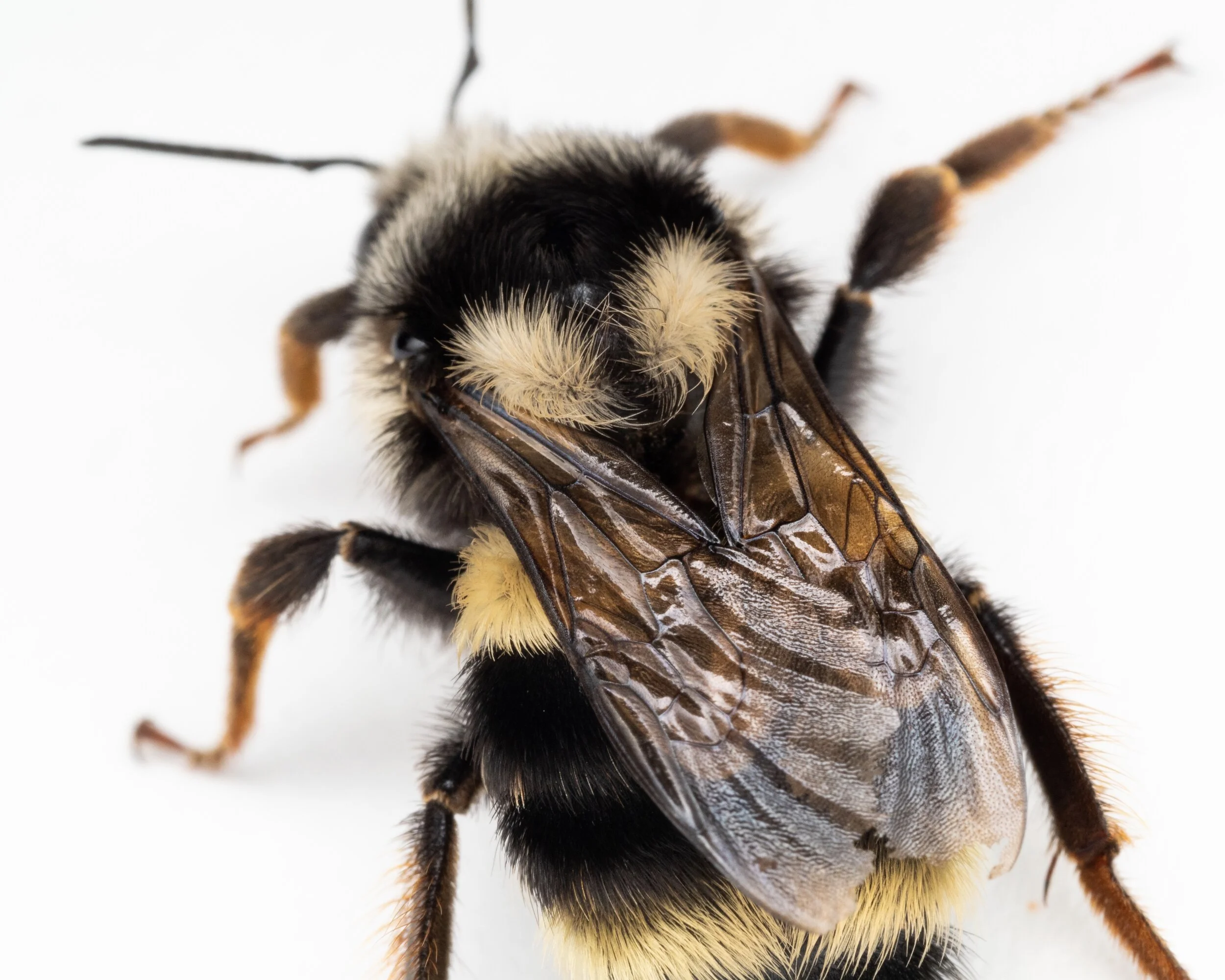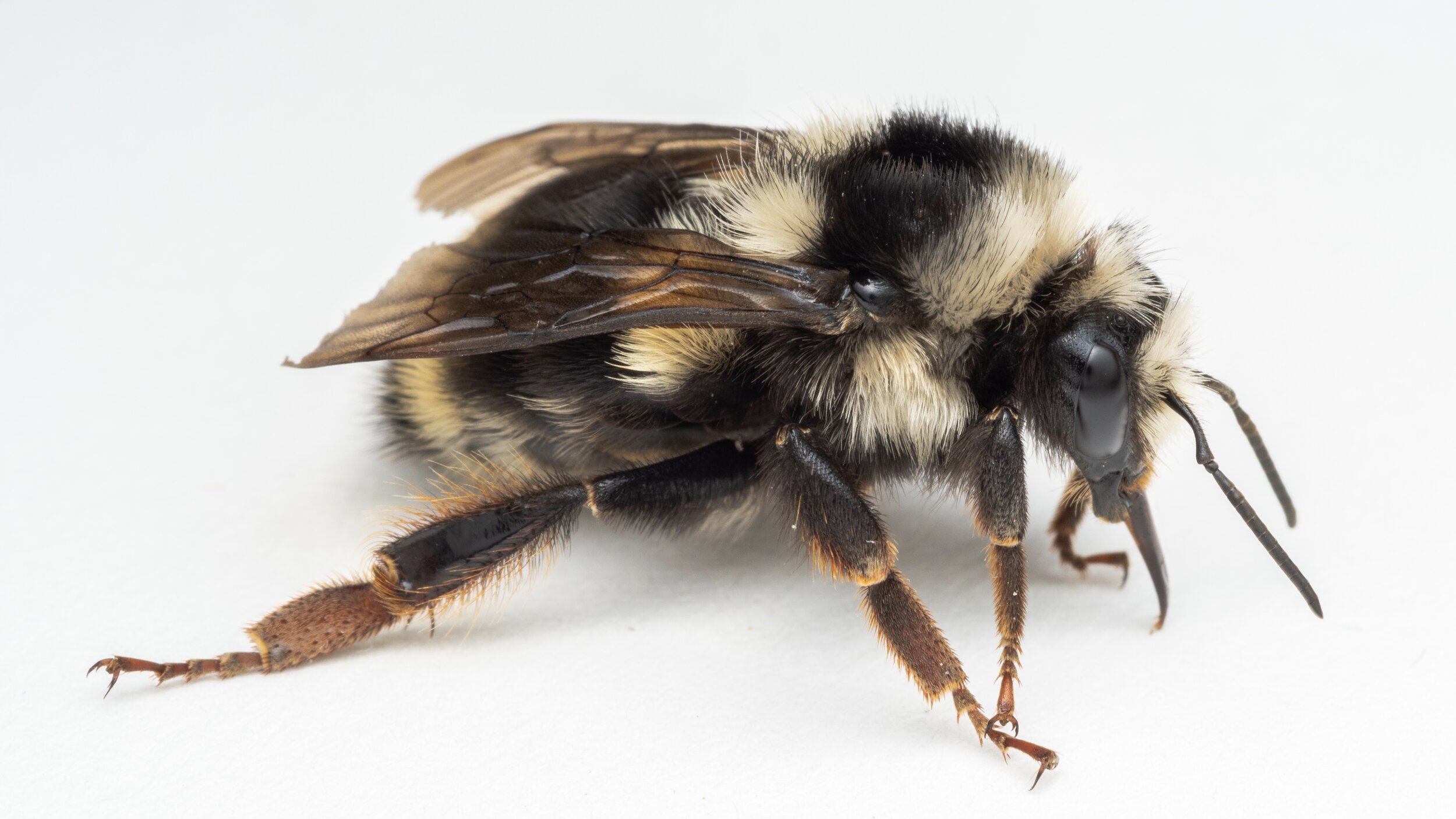Scientific Name: Bombus bifarius
Common Name: Black-notched bumblebee; Two-form bumblebee
Family: Apidae
Species Range: These beautiful bumbles are found in the western areas of North America. They are fairly widespread in the southwestern United States up through the PNW and into British Columbia and Alberta, Canada.

Identification Tips: B. bifarius are mid-sized bumblebees. Both males and females have a distinctive notch of black hair running through the middle of their thorax, giving them their common name the “black-notched” bumblebee. Tergal segments (abdominal segments used in bumblebee identification) 2 and 3 can be highly variable in this species ranging from black to red to a mix of the two.

Nesting Habits: Like other bumblebees, B. bifarius are eusocial, colony-dwelling bees. Mated queens emerge in early spring to scout for suitable nesting sites, sometimes taking up residence in abandoned rodent dens. Once she’s settled, the queen will raise the first generation of workers while taking care of all the foraging, incubating, and caretaking of the young. Once her workforce has matured, the queen’s function becomes solely reproductive. Mature colonies range from 100-200 individuals. Later in the summer, the colony will raise males and virgin queens. Male B. bifarius leave scent trails to attract mates. This species of bumble is careful not to mate with nestmates. Males will often guard females for up to an hour during mating events.

Preferred Forage: B. bifarius bees have medium-length tongues and, like other bumbles, tend to prefer composite type flowers (flat flowers composed of many flower heads). These bees also enjoy plants from the Lupine family (Lupinus), and the clover family (Melilotus).
Active Season: Queens are active March through May and August through October (depending on location and elevation). Workers are active from April through October, and males are active from July through October.
Fun Fact: Queens from this species mate with only one male!
